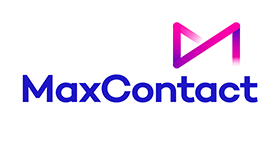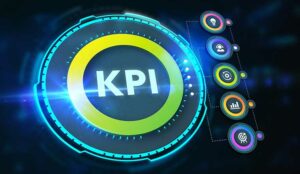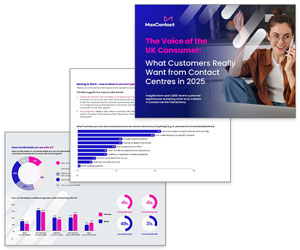MaxContact explores the art of benchmarking for outsourced contact centres, helping you identify strengths, weaknesses, and opportunities for growth.
Is your outsourced contact centre struggling to keep pace with rising customer expectations and tightening margins? You’re not alone. A large number of BPO leaders are feeling the pressure.
Many BPO leaders also struggle with the challenge of accurately measuring and improving performance. Benchmarking offers a powerful solution, but knowing where to start can be overwhelming.
What Is Benchmarking?
Benchmarking is your secret weapon for growth. It’s a simple idea: compare your performance against industry standards to identify where you perform well and where you need to improve.
There are two main types:
- Competitive benchmarking: How do you stack up against direct competitors?
- Process benchmarking: What can you learn from other industries’ best practices? (this one is less commonly used)
The Benchmarking Challenge
BPOs are often faced with inconsistent data, varying KPI definitions and a lack of clarity when it comes to industry standards. The fast-paced nature of the contact centre environment, coupled with intense competitive pressures, makes it difficult to establish reliable benchmarks.
Despite these challenges, benchmarking is essential for BPO survival and growth. Here’s why:
- Measuring important metrics is about quality control. It tells you what you’re doing well and what you could be doing better.
- Benchmarking gives you data, and data allows you to compare your performance. This gives you the evidence you need to drive improvements.
- Consistent benchmarking is a highly effective way of identifying and implementing best practice. Applying best practice across your contact centre operations gives you a competitive edge.
- Benchmarking over time is the best way to stop minor challenges becoming major problems, for example, identifying agent churn.
Overcoming benchmarking challenges requires a strategic approach. It starts with defining clear objectives and selecting relevant KPIs.
What Are the Top 3 Metrics?
Our recent Benchmark Report revealed the top 3 metrics that contact centres put the most emphasis on:
- 50.4% said Average Handle Time (AHT) was their top metric.
- 42.2% named Quality Assurance (QA) as their top metric.
- 41.2% confirmed CSAT as the most important metric.
The predominance of AHT is influenced by tight margins and challenging economic conditions. As a result, contact centres squeeze AHT.
However, measuring AHT in isolation is not a metric that should be taken at face value as it neglects customer experience. Consider AHT alongside other metrics such as CSATs for a clearer picture.
So what metrics should contact centres report on? The answer to that depends on the industry.
Key KPIs for Sales and Debt Resolution BPOs
Understanding and tracking the right KPIs is crucial for BPOs in sales and debt resolution, but the metrics each of these sectors puts emphasis on will differ. Let’s take a closer look into the metrics that matter.
Sales-Focused BPOs
For sales BPOs, revenue generation is paramount. Key KPIs include:
- Average Revenue Per Call (ARPC): Measures the average revenue generated per call. Improving sales scripts, agent training, and upselling can boost ARPC.
- Conversion Rate: Indicates the percentage of calls that result in a sale. Focusing on lead qualification, effective sales pitches, and overcoming objections can enhance conversion rates.
- Sales Cycle Length: Tracks the time between initial contact and closing a deal. Streamlining the sales process, using CRM effectively, and accelerating decision-making can reduce sales cycle length.
- Customer Acquisition Cost (CAC): Measures the cost of acquiring a new customer. Optimising marketing campaigns, refining lead generation, and improving sales efficiency can lower CAC.
Debt Resolution BPOs
Debt resolution BPOs focus on recovering outstanding debts while maintaining customer relationships. Key KPIs include:
- First Contact Resolution (FCR): Measures the percentage of customer issues resolved on the first contact. Effective agent training, improved systems, and knowledge bases can increase FCR rates.
- Promise to Pay (PTP) Rate: Indicates the percentage of customers who commit to a repayment plan. Clear communication, flexible payment options, and empathy can enhance PTP rates.
- Debt Recovery Rate: Measures the percentage of outstanding debt recovered. Effective collection strategies, legal compliance, and customer retention efforts can improve debt recovery.
- Customer Satisfaction (CSAT): Evaluates customer satisfaction with the debt resolution process. Active listening, empathy, and transparent communication can boost CSAT scores.
By closely monitoring these KPIs and implementing data-driven strategies, BPOs in both sales and debt resolution can optimise performance and achieve their business objectives.
This blog post has been re-published by kind permission of MaxContact – View the Original Article
For more information about MaxContact - visit the MaxContact Website
Call Centre Helper is not responsible for the content of these guest blog posts. The opinions expressed in this article are those of the author, and do not necessarily reflect those of Call Centre Helper.
Author: MaxContact
Reviewed by: Megan Jones
Published On: 11th Oct 2024 - Last modified: 22nd Oct 2024
Read more about - Guest Blogs, MaxContact






 MaxContact is the AI-powered customer engagement software that helps you turn every customer conversation into a high-impact, revenue-driving moment. We empower your teams to connect smarter, perform better, and scale faster – without losing the human touch.
MaxContact is the AI-powered customer engagement software that helps you turn every customer conversation into a high-impact, revenue-driving moment. We empower your teams to connect smarter, perform better, and scale faster – without losing the human touch. 









